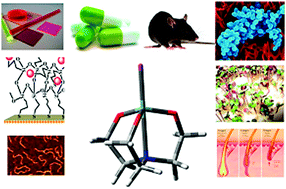Silatranes: a review on their synthesis, structure, reactivity and applications†
Abstract
This critical review summarizes progress of the rapidly developing and very active field of

* Corresponding authors
a
Centre of Advanced Studies and Department of Chemistry, Panjab University, Chandigarh—160 014, India
E-mail:
prof_jkpuri@yahoo.com
Tel: +919814522681
This critical review summarizes progress of the rapidly developing and very active field of

 Please wait while we load your content...
Something went wrong. Try again?
Please wait while we load your content...
Something went wrong. Try again?
J. K. Puri, R. Singh and V. K. Chahal, Chem. Soc. Rev., 2011, 40, 1791 DOI: 10.1039/B925899J
To request permission to reproduce material from this article, please go to the Copyright Clearance Center request page.
If you are an author contributing to an RSC publication, you do not need to request permission provided correct acknowledgement is given.
If you are the author of this article, you do not need to request permission to reproduce figures and diagrams provided correct acknowledgement is given. If you want to reproduce the whole article in a third-party publication (excluding your thesis/dissertation for which permission is not required) please go to the Copyright Clearance Center request page.
Read more about how to correctly acknowledge RSC content.
 Fetching data from CrossRef.
Fetching data from CrossRef.
This may take some time to load.
Loading related content
